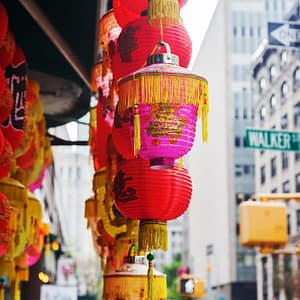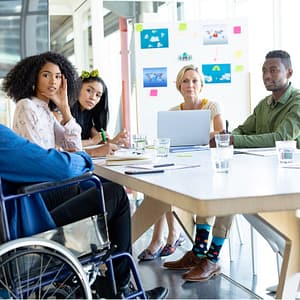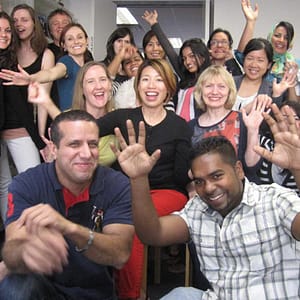Translating the Language of Diversity, Tolerance, and Inclusion
On any given day, Eriksen’s German-born project manager might stop at the deli for lunch where she chats with the Moroccan-born owner. Meanwhile, our Algerian-born operations director may run into the Yemeni-owned bodega to grab coffee for herself and our Colombian-born Spanish quality manager. She’ll then head into the office for a meeting with our owner, who was born and raised in Fredrikstad, Norway. New York City, our hometown, is a city built on immigrants.
Strength in Diversity
New York City is well known for its cultural and ethnic diversity. Over three million of New York City’s residents are foreign-born, from more than 200 different countries. With more than 8.4 million residents of every race, ethnicity, and religion, New York City leads the country in diversity. The city’s multiculturalism is well illustrated by its mix of languages. According to Business Insider, there are more than 800 languages spoken in Queens alone, making it the most linguistically diverse area in the world.1
“I think of New York as a purée and the rest of America as vegetable soup,” said actor and writer Spalding Gray.
The city has for many years welcomed, celebrated, and protected the contributions of its immigrants and diverse residents. NYC has the largest municipal ID program in the country and broad language access policies. It was one of the first cities to implement laws limiting cooperation with federal immigration enforcement officials in the detention of undocumented immigrants. And the NYC Human Rights Law is one of the strongest anti-discrimination laws in the country, enacted to protect residents from discrimination based on race, color, religion, immigration status, national origin, sexual orientation, and gender and gender identity.
Eriksen is proud of the City’s efforts to raise awareness about the resources and protections it offers to its residents. And we’re honored to have had the opportunity to provide translations in support of some recent City initiatives.
Let’s Chat!
Get in touch to speak with a member of our team.
Information Is Power
In 2015, the Office of the New York City Comptroller published the comprehensive Immigrant Rights and Services Manual. This 75-page manual tells immigrants how they can make the most of the resources and services offered by federal, state, and municipal agencies.
The manual provides valuable information about public benefits, voting and civic participation, deportation and detention, small business assistance, workers’ rights, consumer rights, protections, and community resources.
It also addresses language access policies, an important topic in a city where over half the residents speak a language other than English at home. The manual spells out the City’s policy on Language Access Rights: “A person who does not speak or read English proficiently has the right to ask government agencies, including schools, health clinics, and social service offices, for translation or interpretation services. It is generally inappropriate for children or relatives to be used as interpreters in many matters. Many government agencies are required by law to provide language access in languages other than English.”
To maximize the manual’s accessibility, the original 2015 version was translated into Chinese, Korean, Russian, and Spanish, with Bengali, French, and Haitian Creole added later that year.
In 2017, Eriksen was proud to help the Comptroller’s office produce updates to the manual in all seven languages, bolstering its effectiveness in diverse multilingual communities. We then helped with the editing, verification, and formatting of the manual’s new Arabic and Urdu translations, published in 2017 with the newly updated content.
Inclusion, Tolerance, and Understanding
In 2017, the New York City Commission on Human Rights disclosed a 60% increase in reports of discrimination over the course of 2016. And this trend was showing no signs of slowing down in 2017. The Commission was forced to more than double the number of investigations into race, religion, national origin, and immigration status over this time period.
In response to this alarming trend, Mayor de Blasio and the New York City Commission on Human Rights rolled out the multifaceted “Know Your Rights” campaign. The message was clear. New York City residents should not face discrimination based on where they come from, the language they speak, the color of their skin, the religion they chose to practice, their sexual identification, or their immigration status.
Anti-discrimination ads were placed in subways, NYC Transit mobile apps, and LinkNYC kiosks. Ads were positioned in houses of worship, laundromats, barber shops, and nail salons, and they were run in community newspapers and on radio stations. Videos were shown on major video sharing and social media platforms, and events were held around the city. Supporting efforts include the creation of a Bias Response Team and expansion of the Commission’s Infoline.
Campaign content focused on issues impacting people from marginalized communities and shared discriminatory scenarios commonly experienced by Muslim, Jewish, Asian, Hispanic, Black, and LGBTQ individuals. The campaign provided resources, informed residents of their rights, and offered instructions on how to report incidents and file complaints. All while sending a very clear public message that New York City does not tolerate discrimination.
Given the city’s linguistic diversity, the Commission on Human Rights, the Mayor’s Office of Immigration Affairs, and the ethnic and community media worked together to make sure the Human Rights campaign messaging reached New York residents in many different languages. Eriksen worked with the Commission on Human Rights to translate campaign components into ten languages, helping the campaign resonate with diverse communities.
Featured Services
Learn more about…
New York City—Where All Are Welcome
As long-time Brooklyn residents, the Eriksen staff welcomes any opportunity to support New York’s non-English speaking communities. And we especially like to work with organizations that do good. Supporting these initiatives has given us a chance to do both.
At a time when immigrants nationwide are under extreme scrutiny and acts of discrimination are increasing, New York is leading the charge to combat these trends and remain a city that recognizes and protects the rights of all residents. We applaud the City for supporting its many vibrant communities and celebrating the contributions of diverse individuals from around the world.
 Named to the 2024 Inc. 5000 list of fastest-growing companies and ranked among the world’s top 100 language service providers by CSA Research
Named to the 2024 Inc. 5000 list of fastest-growing companies and ranked among the world’s top 100 language service providers by CSA Research

